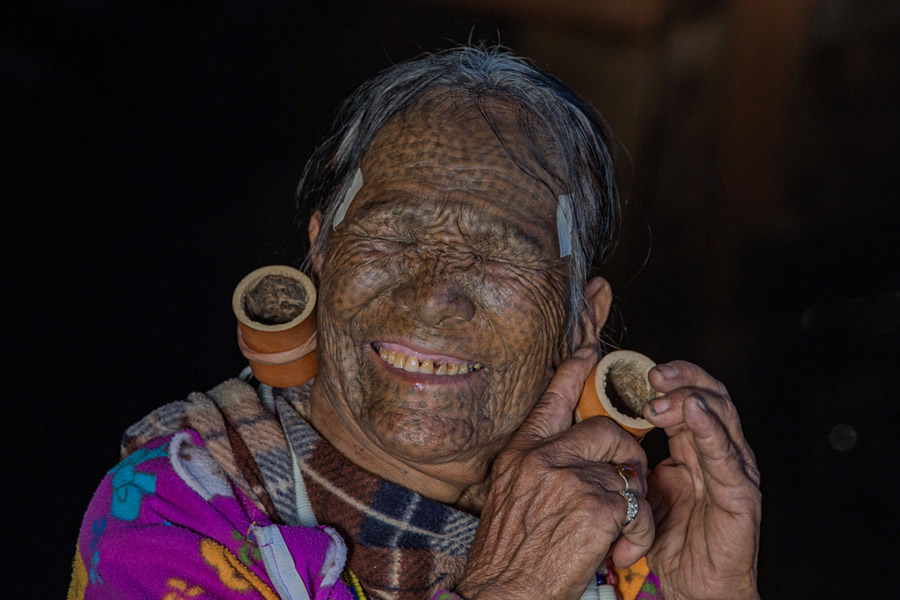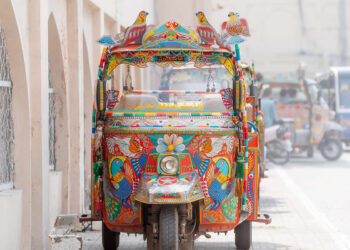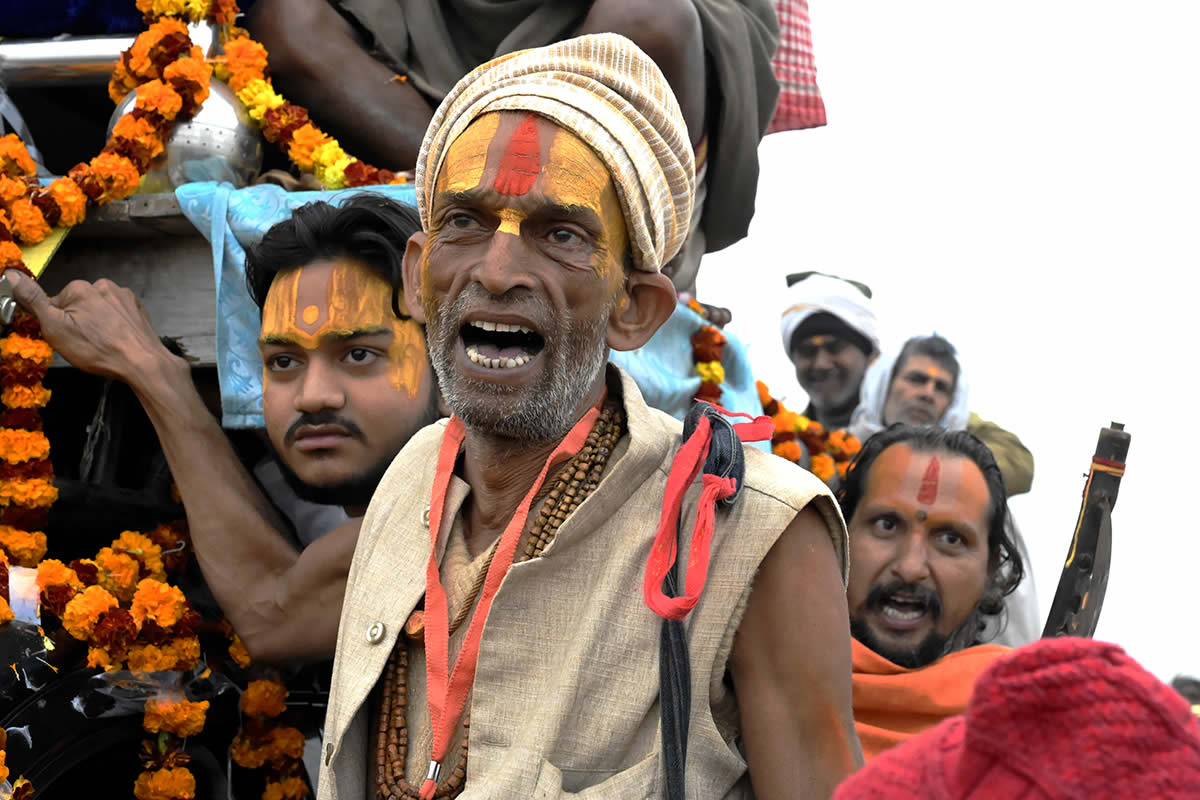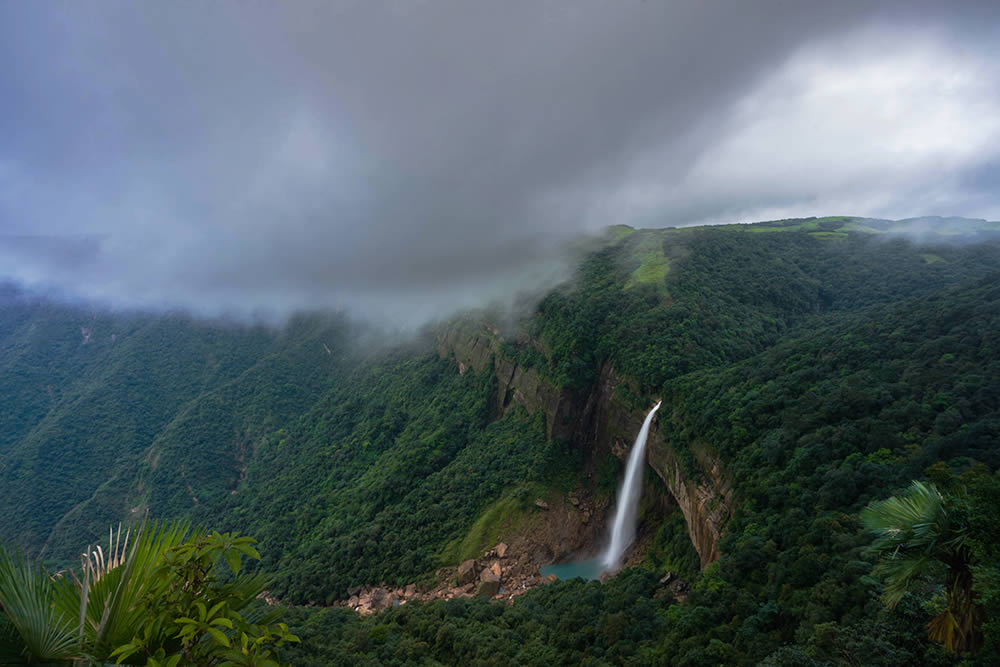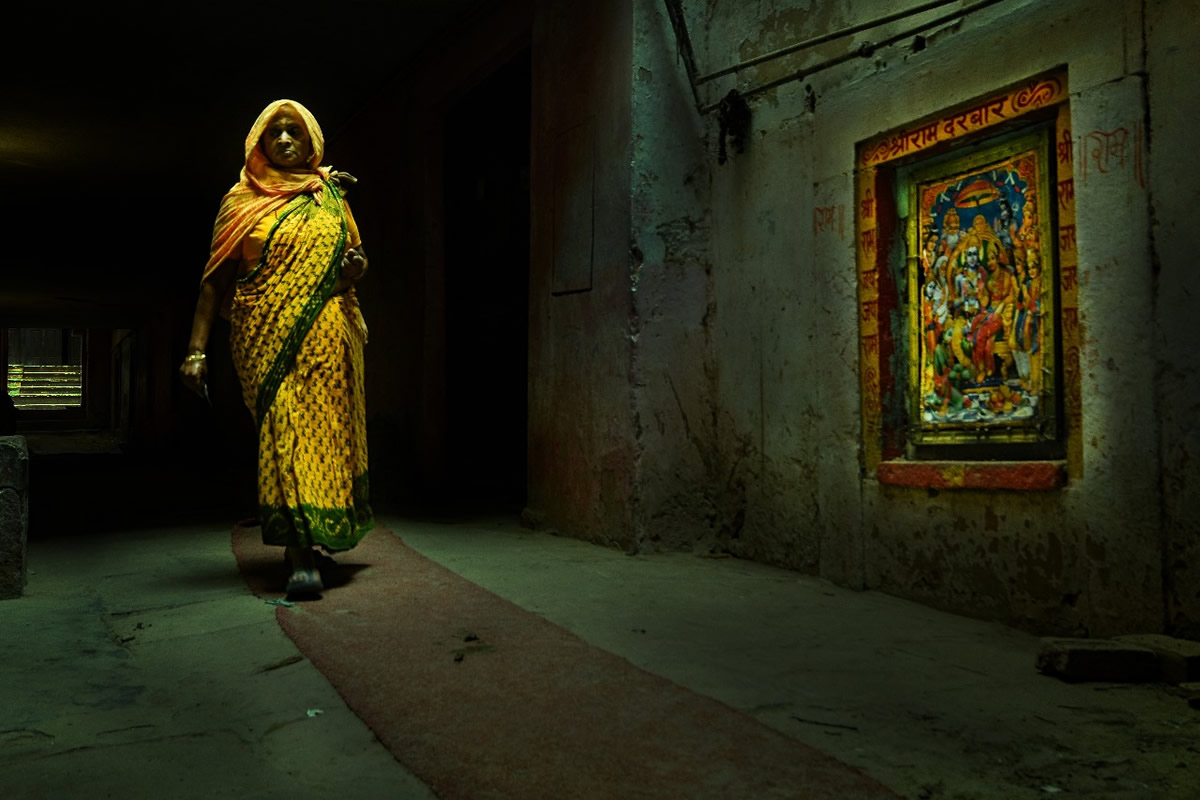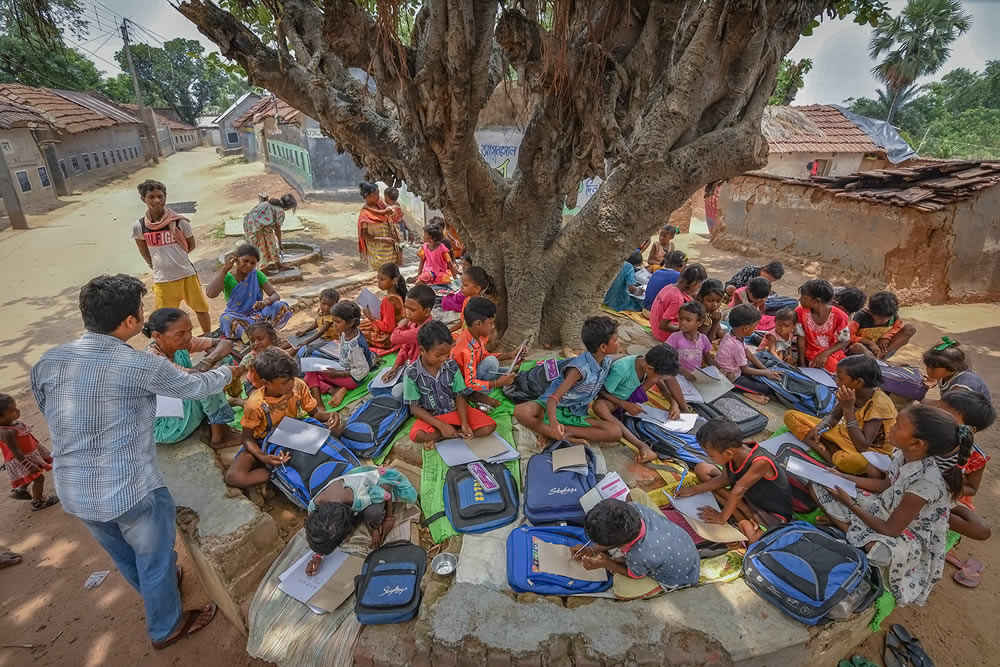The remote mountains of Chin state of Myanmar, is witness to one of the fast vanishing tribal traditions of tattoo faced women. The older women of the Chin tribe still bear the scars of a barbaric ancient tradition. Chin legend has it that when a Burmese king traveled to the region, he was so impressed by the women’s beauty that he kidnapped one to take as a bride. Because of this, Chin families began to tattoo their daughters to make them look unattractive, thus preventing them from being kidnapped or forced to become a concubine during the time of the Burmese king. Other Chin tales say that the tattooing was done for beauty, while some others say, to differentiate between the various tribes in case one was kidnapped by another.
As tradition stood, young girls aged between 12 to 14, had their faces tattooed in a painstaking process. They also wear enormous earrings which stretch their skin.
The Burmese socialist government banned the practice of face tattooing during the 1960s as part of their programme of getting rid of the old and ushering in modernisations, with missionaries in the Chin state also criticising it as barbaric. These women are the last generation to all bear facial tattoos; when they die, a chapter of Chin history will be relegated to the books.
The ancient practice involves using tattoo needles made by tying three pieces of bamboo together or using thorns to draw the design. The ink is a mixture of cow bile, soot, leaves, grass shoots and pig fat. The leaves give colour, the soot acts as a disinfectant and the grass shoots are added at the end, acting as a bandage and natural healing cover. The concoction is applied to the face using sharp cane thorns, which prick the skin to create the pattern. The process is extremely painful, especially the tender eyelid area and it normally takes one day to finish, it can be extended to two days depending on the complexity.
With a variety of styles and designs the detailed markings have a deep rooted cultural significance. The six Chin tribes wear an array of different tattoos. The M’uun women are the most easily recognisable, with large looping “P” or “D” shapes on their faces and “Y” symbols on their foreheads. The M’kaan women have line tattoos on both their foreheads and chins. The Yin Du and Dai tribes feature long vertical-line tattoos across the entire face, including the eyelids; similar to the Nga Yah who have dots as well as lines. The U Pu tribe have the incredibly rare whole face tattoo, this is one of the most impressive styles as the entire face is inked up.
But times are changing even in this remote corner and young Chin who are getting education and some travelling as far as Yangon no longer see face tattooing as fashionable or beautiful. In fact, many of them are embarrassed by their grandmothers’ seemingly out-of-date markings.
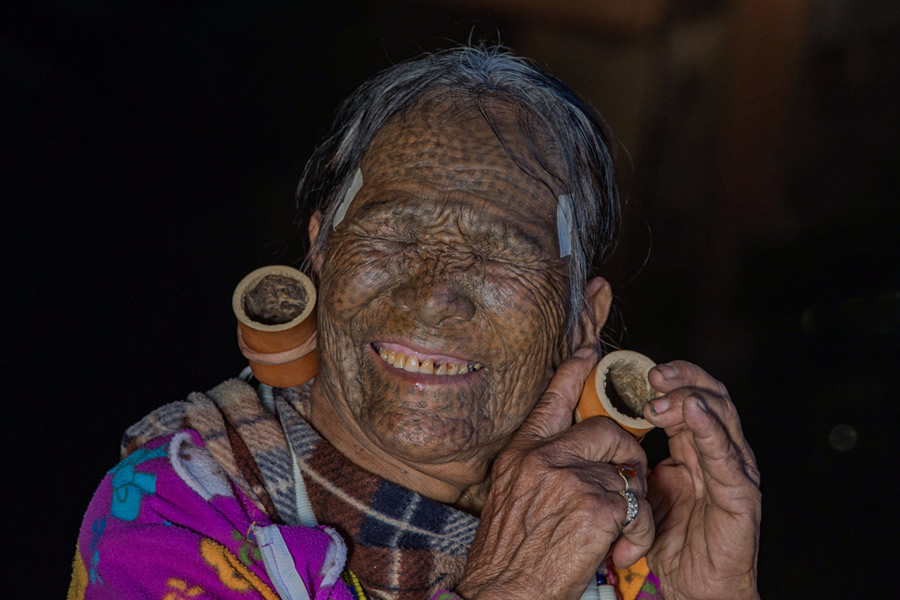
90-year-old Hung Shen is one of the oldest surviving M’kaan women from the Chin Province of Myanmar having line tattoos on both their foreheads and chins.
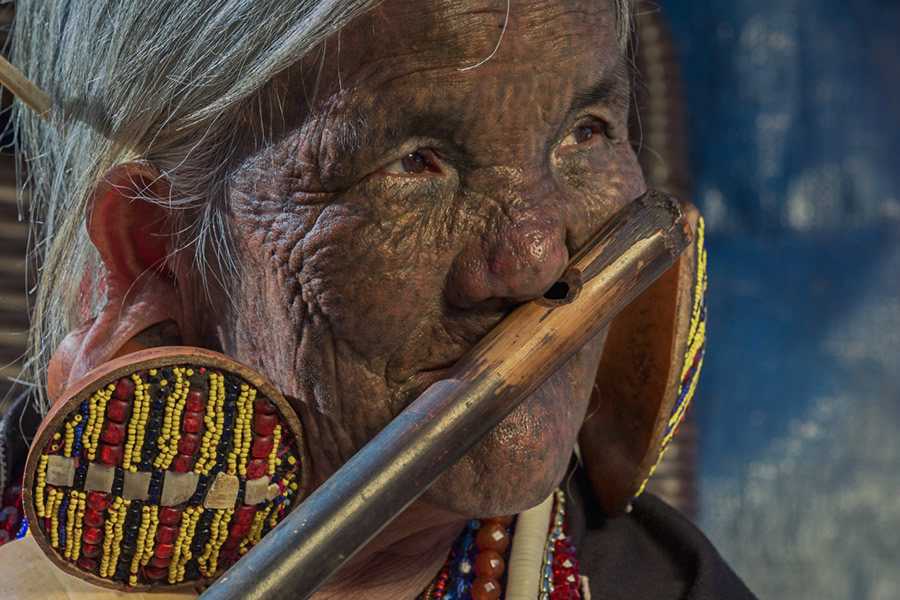
Yaw Shen (88) who got her tattoos at the age of 15, entertains visitors by playing the nose flute, also a vanishing tribal art.
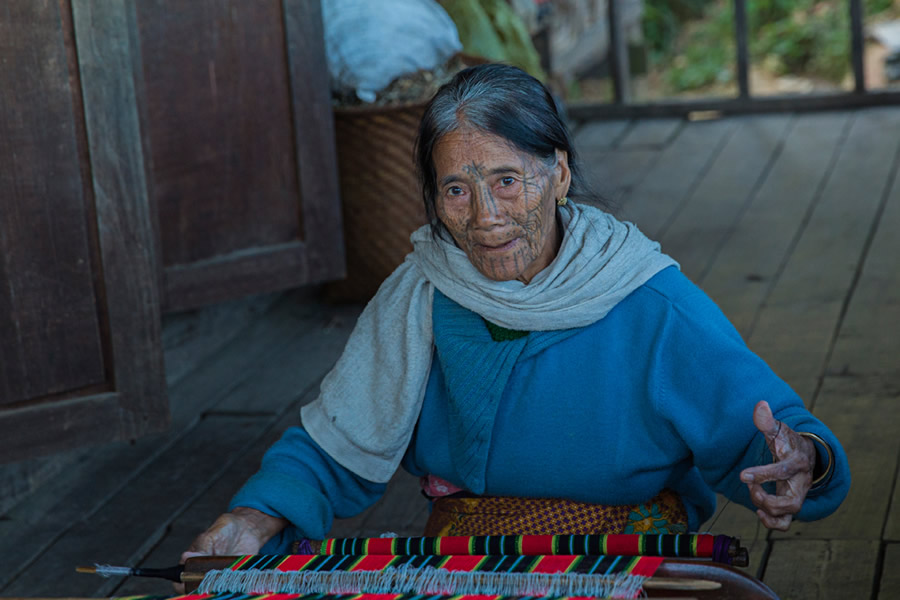
A M’uun woman goes about her weaving work as I visit her home.
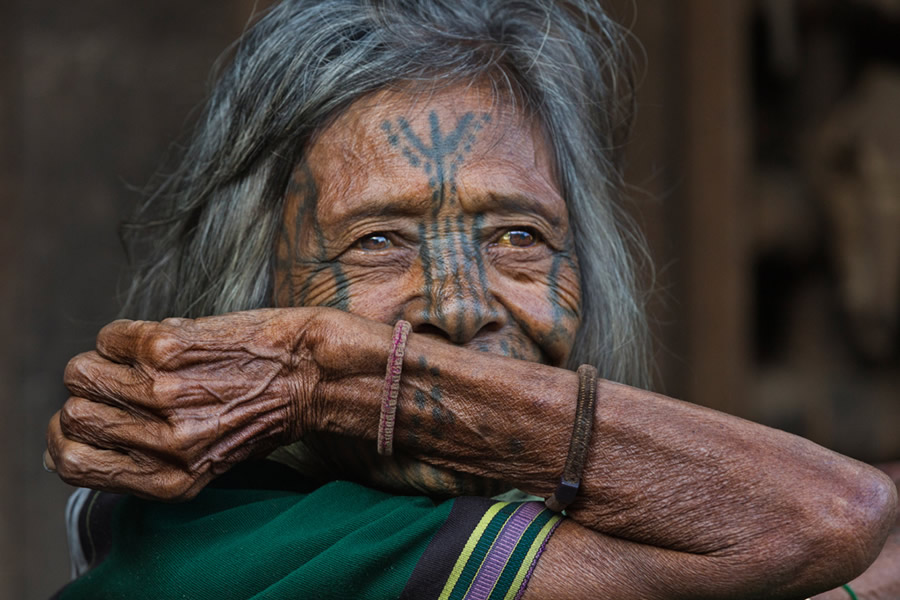
M’uun women are the most easily recognisable, with large looping shapes on their faces and “Y” symbols on their foreheads.
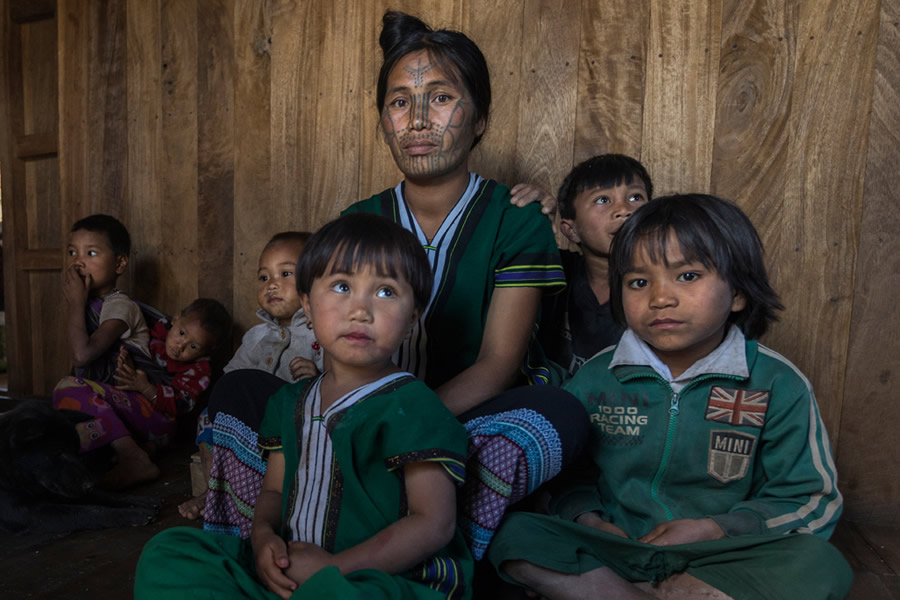
The Chin tribals does not seem to believe in family planning and often have large families.
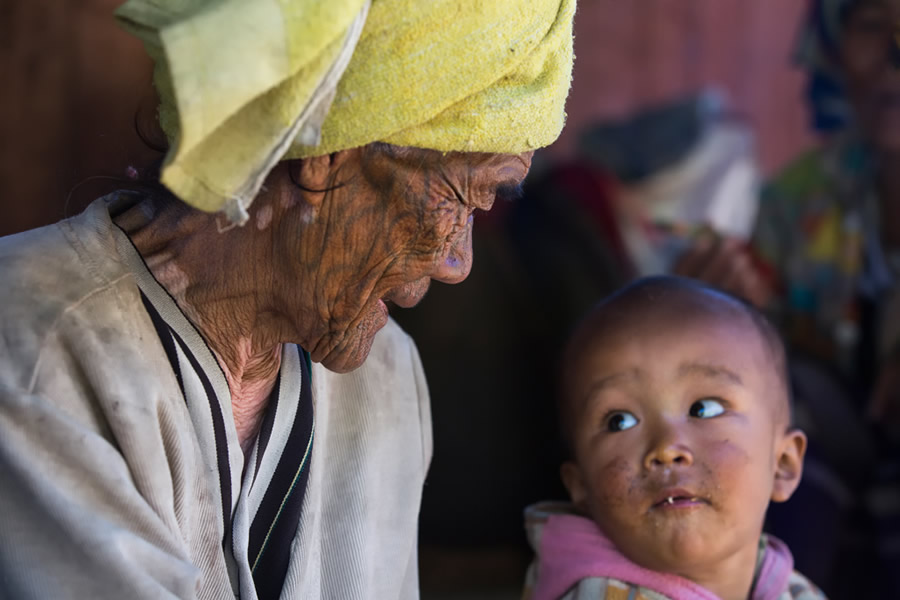
An older woman interacts with her grandson.
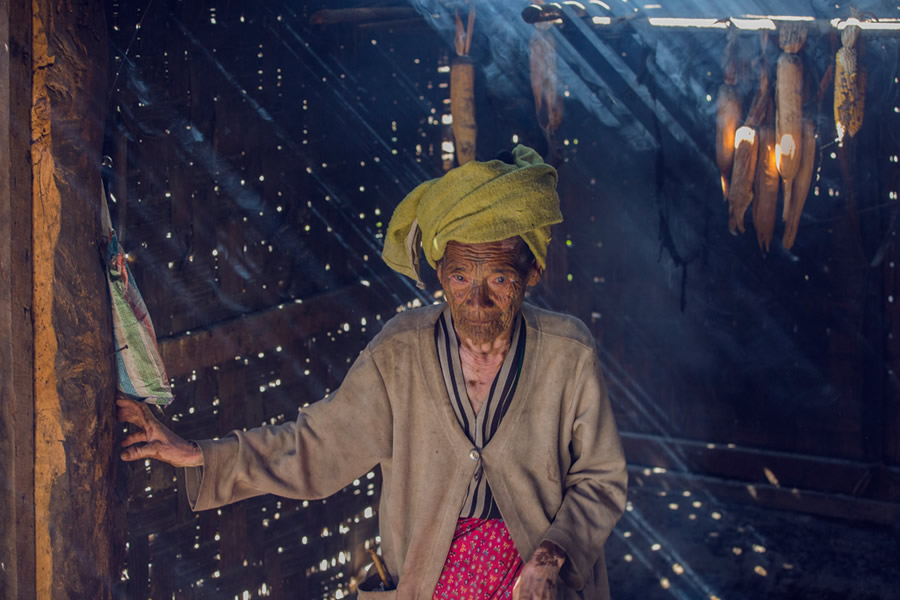
The kitchen is often the place where these women spend a better part of their life.
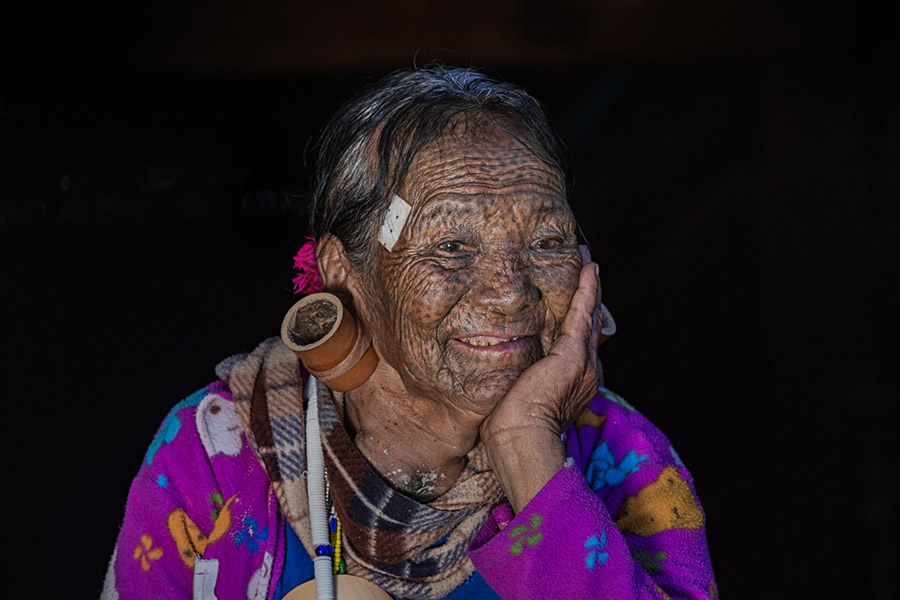
Beauty is in the eye of the beholder and Hung Shen at 88 is still a head turner, when she decides to dress up.
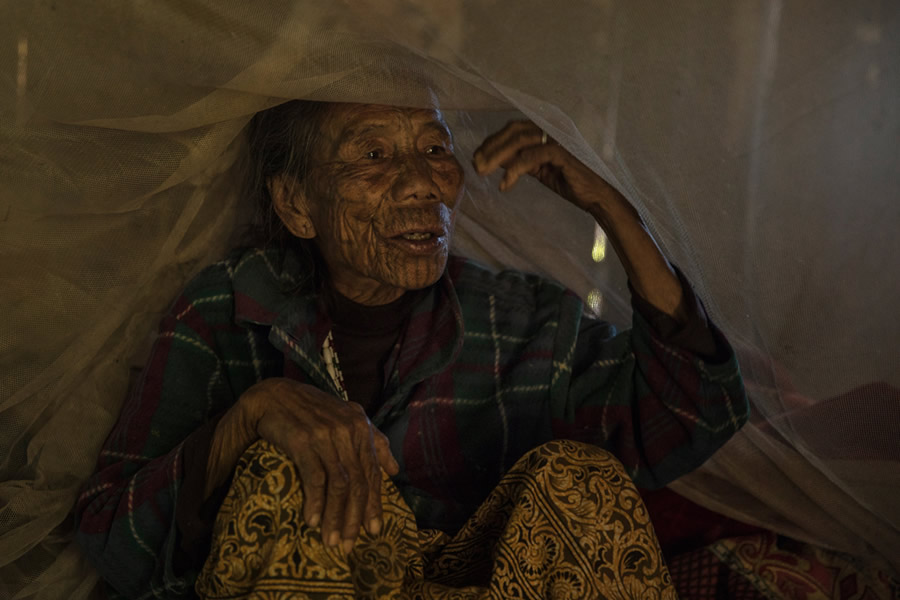
Often regarded as a malaria zone, a M’uun woman gets out of her mosquito net.
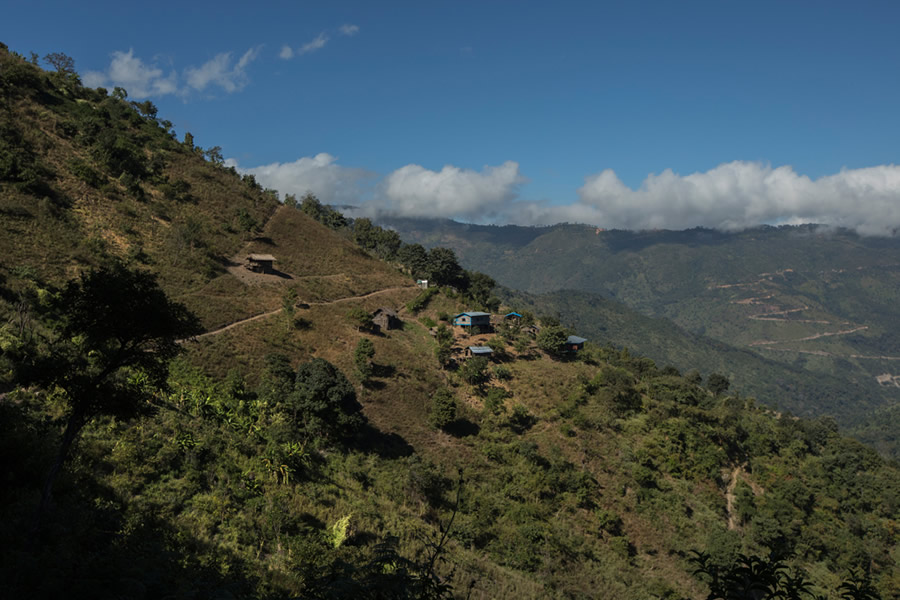
The tribal villages are scattered around the hills and takes a strenuous hike to reach them on foot.
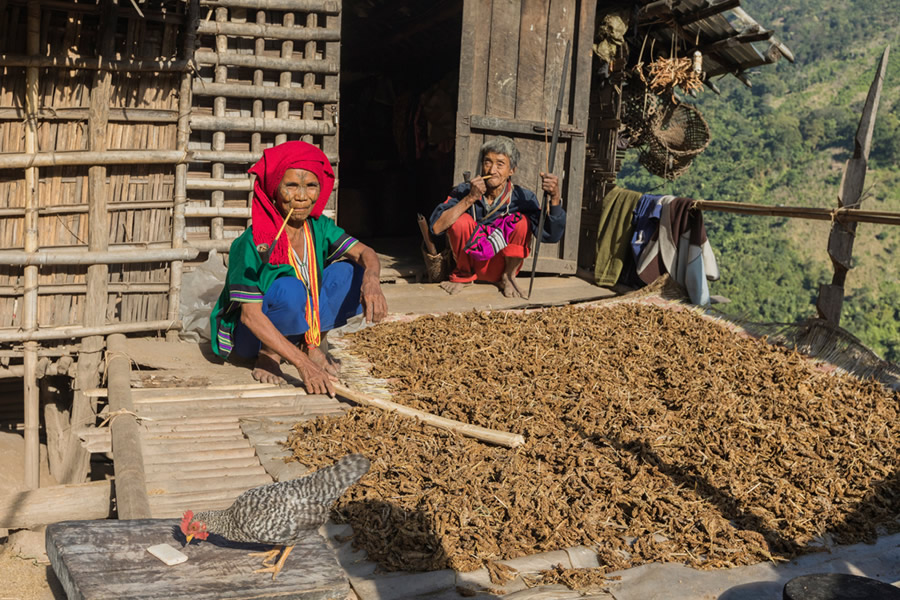
A Chin woman with her tattoo face goes about her daily chore as her husband takes a smoke.
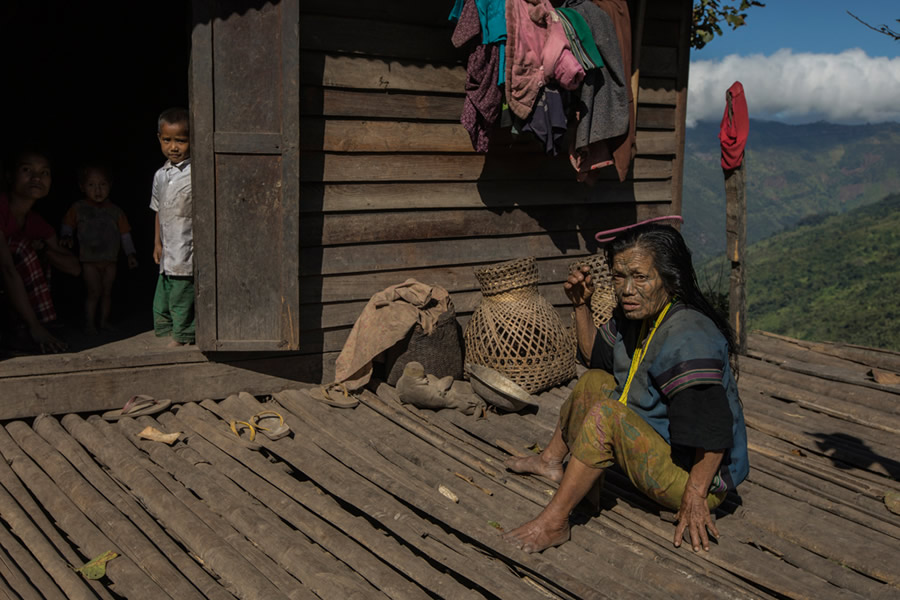
Most houses are built of wood and bamboo, standing on stilts on the hillside.
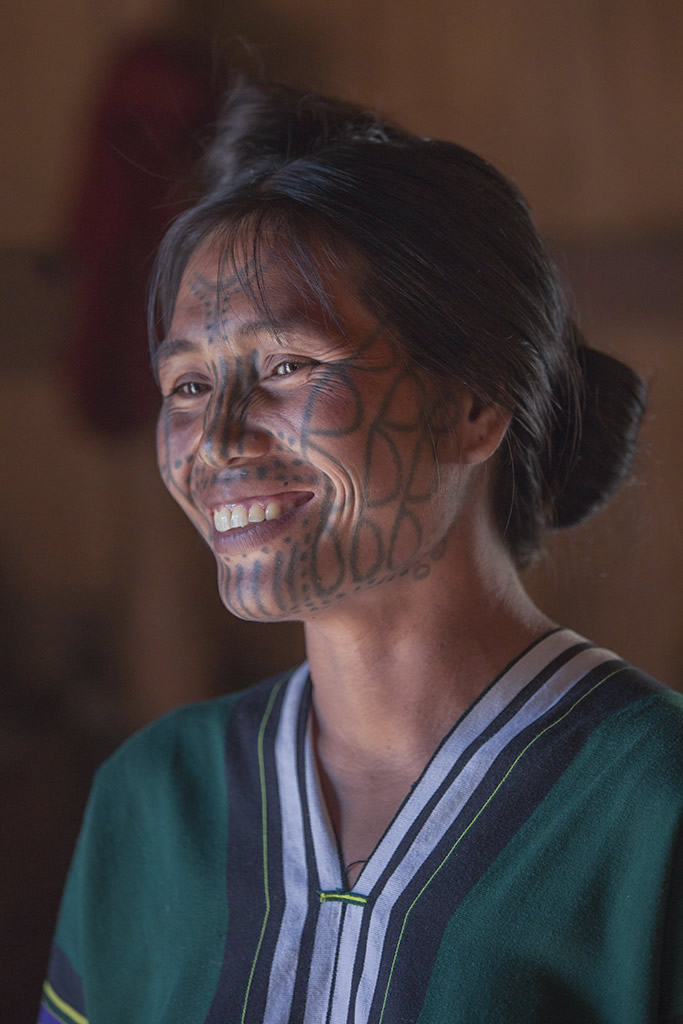
Pam Hung is one of the rare women of the younger generation who decided to uphold the century old tradition of tattooed faces. Despite the government ban, the Chin State is a long way from the capital and many mountain villages receive little outside interaction.
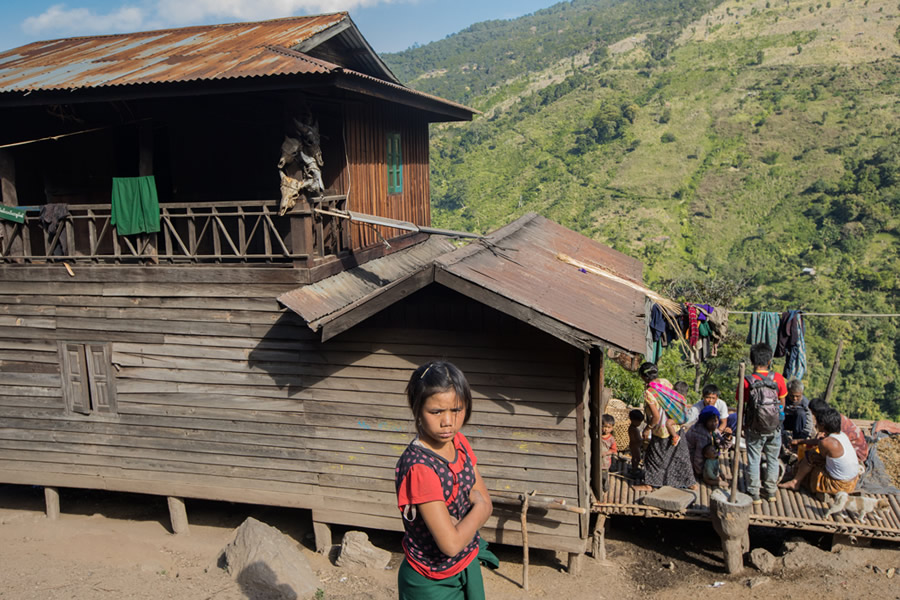
With increasing access to the outside world, most young Chin don’t see face tattooing as fashionable or beautiful. In fact, many of them are embarrassed by their grandmothers’ seemingly out-of-date markings.

Scarred as a girl: When they were aged 12 to 14, women in Burma had their faces tattooed to make them so ugly they wouldn’t be kidnapped and forced to be concubines, it is thought
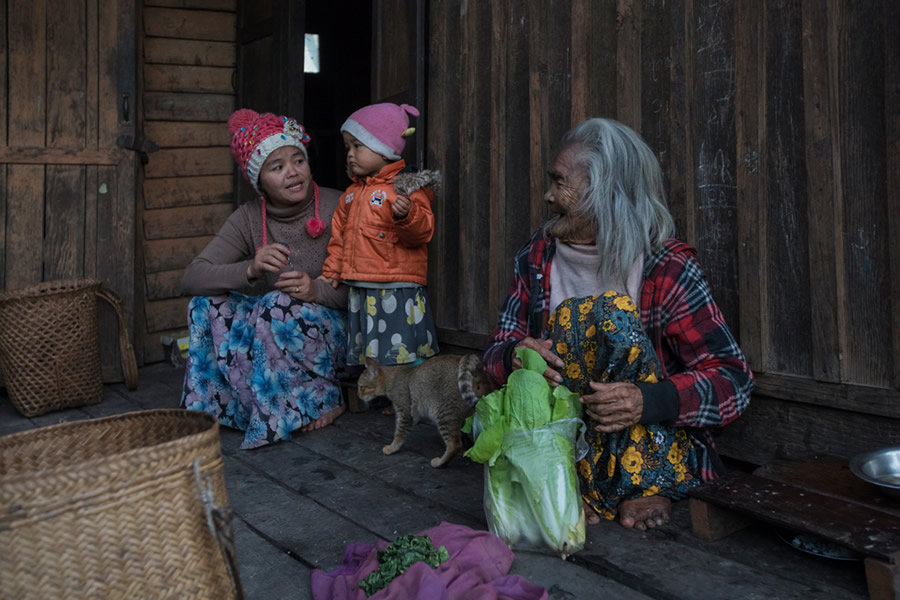
Up until the 1960’s girls born into the varying Chin tribes were expected to get their faces tattooed between the ages of 12 and 14. However in this picture of three generations, it is only the grandmother who has her face tattooed.
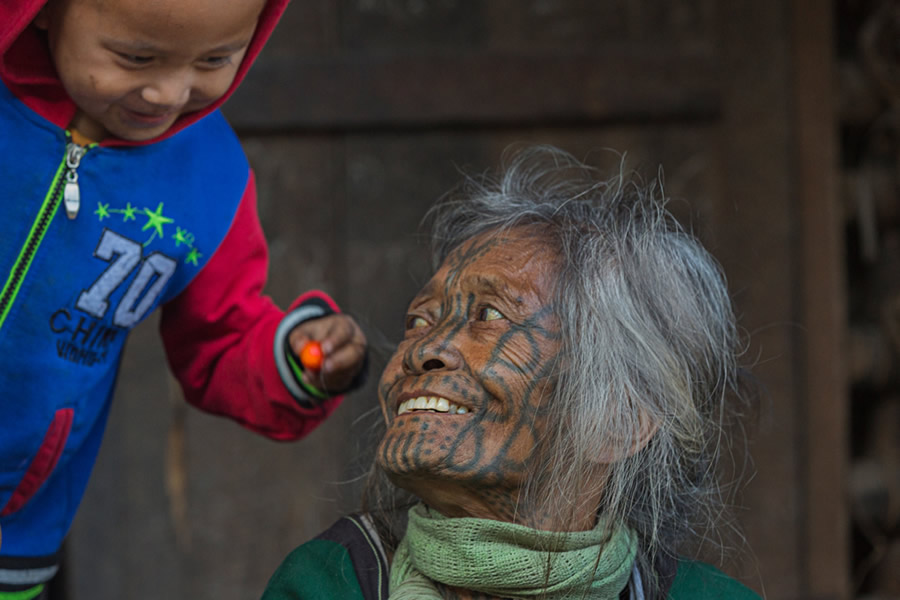
“I got my tattoos when I was about 12. It was so painful, my face hurt for five days. I didn’t think about why I did it, it is just our custom and what all girls my age did then”, says this lady who has no idea what her actual age is.
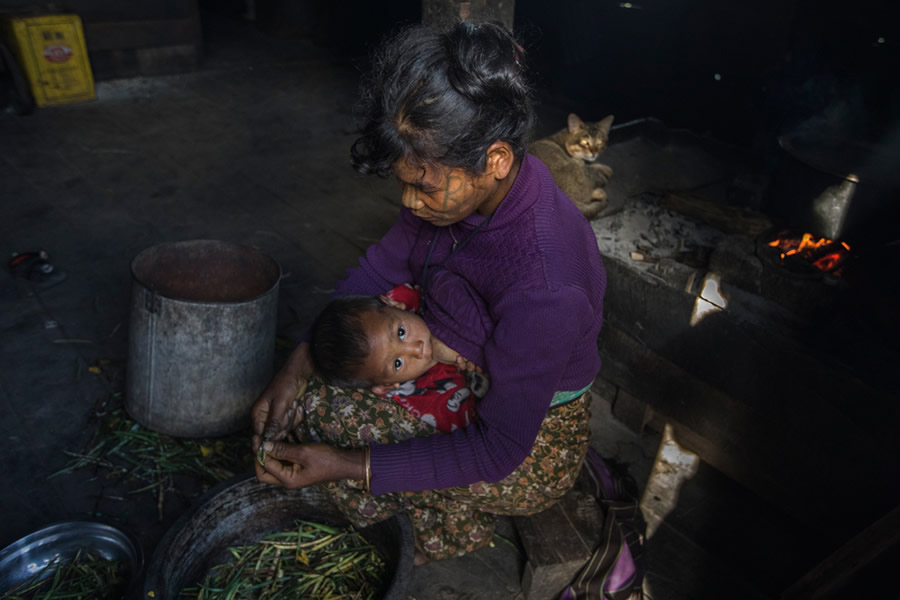
Another woman of the younger generation who has defied government prohibition to go ahead with the tattoo, just like the women in her family have been doing for generations.
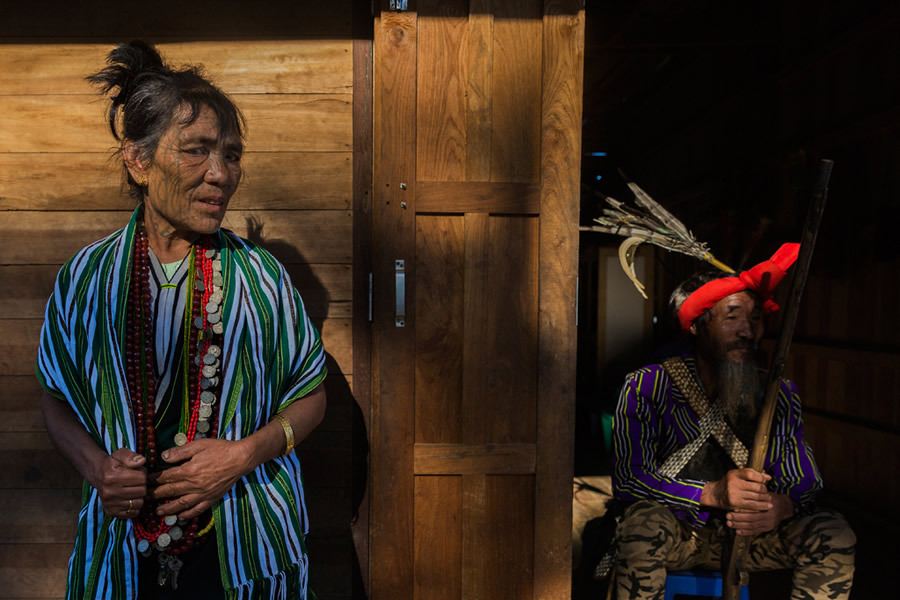
Hunting is the most common male profession among the Chin tribes. A M’uun woman with her hunter husband.

Facial tattoos became part of Chin culture nearly a thousand years ago and re-defined the concept of traditional beauty. It is however a vanishing trend these days.
About Lopamudra Talukdar
Lopamudra Talukdar, a Masters in Zoology from the University of Kolkata, was fascinated by the world of photography ever since she was a kid but never thought of taking it up seriously until she was gifted a Canon 5D Mark II as recently as 2010.
It changed the world around her…. She started looking at the world through a different set of eyes and with accolades and exhibition opportunities coming her way, it also changed how the world looked at her. It helped that she travels around a lot, both inside and outside India but she is particularly fascinated by the diversity of Indian culture and how different it can be from Nagaland to Nagpur! She is currently doing assignment based photo stories for a number of leading magazines including National Geographic Traveller and Femina.
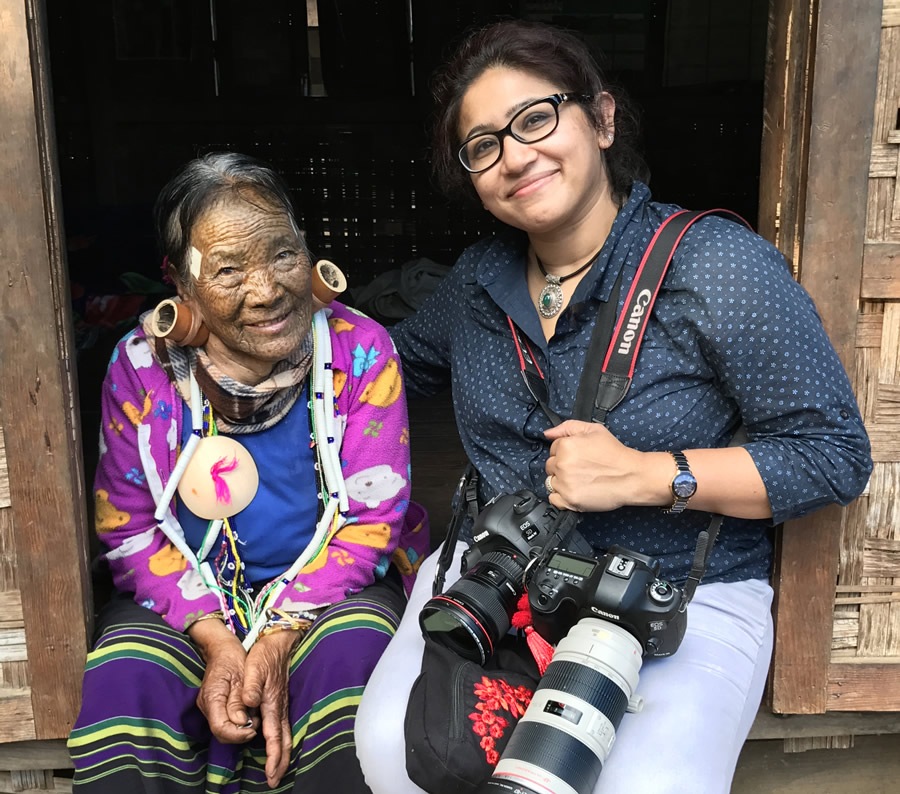
You can find Lopamudra Talukdar on the Web :
Copyrights:
All the pictures in this post are copyrighted Lopamudra Talukdar. Their reproduction, even in part, is forbidden without the explicit approval of the rightful owners.

